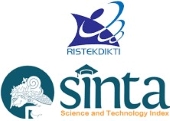Pariwisata dan SDG8 di Pasar Terapung Lok Baintan, Kabupaten Banjar, Kalimantan Selatan
Abstract
ABSTRACT
The Sustainable Development Goals (SDGs) set by the United Nations (UN) are a global agenda to achieve sustainable development until 2030. Focusing on Banjar Regency, South Kalimantan, Indonesia, which has adopted SDGs in the Regional Medium Term Development Plan (RPJMD), this research aims to identify the Lok Baintan Floating Market, as a leading tourist destination in South Kalimantan, in efforts to achieve sustainable tourism, especially SDGs goal 8, decent work and economic growth, and identifying the obstacle and challenges faced. The research method uses a descriptive qualitative approach with data collection involving interviews, observations, and literature studies, with key informants from local government, Kelompok Sadar Wisata (tourism awareness groups), local communities, and private parties involved. The research results show that although Lok Baintan Floating Market tourism provides decent employment opportunities in accordance with SDGs goal 8, challenges faced, such as the lack of diversification of tourism actors and passive community participation, require further efforts to achieve sustainable tourism development in Lok Baintan. Therefore, developing tourism human resource competencies, diversifying tourism actors, monitoring training results, and opportunities for active community participation are the keys to creating decent work and sustainable economic growth at the Lok Baintan Floating Market.
ABSTRAK
Tujuan Pembangunan Berkelanjutan (TPB/SDGs) yang ditetapkan oleh Perserikatan Bangsa-Bangsa (PBB) menjadi agenda global untuk mencapai pembangunan berkelanjutan hingga tahun 2030. Befokus pada Kabupaten Banjar, Kalimantan Selatan, Indonesia, yang telah mengadopsi SDGs dalam Rencana Pembangunan Jangka Menengah Daerah, penelitian ini bertujuan untuk mengidentifikasi Pasar Terapung Lok Baintan, sebagai destinasi wisata unggulan di Kalimantan Selatan, dalam upaya pencapaian pariwisata berkelanjutan khususnya pada SDGs tujuan 8, yaitu pekerjaan layak dan pertumbuhan ekonomi, dan mengidentifikasi hambatan serta tantangan yang dihadapi. Metode penelitian menggunakan pendekatan kualitatif deskriptif dengan pengumpulan data melibatkan wawancara, observasi, dan studi literatur, dengan informan kunci dari pemerintah daerah, kelompok sadar wisata, masyarakat lokal, dan pihak swasta yang terlibat. Hasil penelitian menunjukkan bahwa meskipun pariwisata Pasar Terapung Lok Baintan memberi peluang kerja yang layak sesuai dengan SDGs tujuan 8, tantangan yang dihadapi seperti kurangnya diversifikasi pelaku pariwisata dan partisipasi masyarakat yang masih pasif, memerlukan upaya lebih lanjut untuk mencapai pembangunan pariwisata yang berkelanjutan di Lok Baintan. Oleh karena itu, pengembangan kompetensi SDM pariwisata, diversifikasi pelaku pariwisata, monitoring program pelatihan, dan kesempatan partisipasi aktif masyarakat menjadi kunci dalam menciptakan lapangan kerja yang layak dan pertumbuhan ekonomi yang berkelanjutan di Pasar Terapung Lok Baintan.
Keywords
Full Text:
PDFReferences
Affandi, R. A., Permana, A., Yani, Y. M., & Mursitama, T. N. (2019). Implementing SDG to village level by integrating social capital theory and value chain: (Case of village tourism Pentingsari in Yogyakarta, Indonesia). Journal of ASEAN Studies, 7(2), 122–137.
Alarcón, D. M., & Cole, S. (2019). No sustainability for tourism without gender equality. Journal of Sustainable Tourism, 27(7), 903–919.
Anggarini, D. R. (2021). Dampak sektor pariwisata pada pertumbuhan ekonomi daerah Lampung. Jurnal Bisnis Darmajaya, 7(2), 116–122.
Arisanty, D., Normelani, E., Putro, H. P. N., & Anis, M. Z. A. (2019). The role of local government for local product processing: the implication for tourism sustainability in Lok Baintan Floating Market. Journal of Indonesian Tourism and Development Studies, 7(1), 7–12.
Arisanty, D., Putro, H. P. N., Normelani, E., & Anis, M. Z. A. (2020). Women traders livelihoods in tourism area of Lok Baintan Floating Market. Journal of Indonesian Tourism and Development Studies, 8(1), 25–32.
Ariyani, N., Fauzi, A., & Umar, F. (2020). Faktor - faktor yang mempengaruhi partisipasi pemangku kepentingan pada pengembangan Kawasan Wisata Kedung Ombo. Jurnal Pariwisata Terapan, 4(2), 147–162.
Buhalis, D., Leung, X. Y., Fan, D., Darcy, S., Chen, G., Xu, F., ... & Farmaki, A. (2023). Tourism 2030 and the contribution to the sustainable development goals: The tourism review viewpoint. Tourism review, 78(2), 293-313.
Christien, Putri, A., & Silalahi, W. P. (2023). Analisis multiplier effect pariwisata F1H2O bagi masyarakat kawasan Danau Toba, Balige. Pediaqu: Jurnal Pendidikan Sosial dan Humaniora, 2(3), 11775–11786.
Dube, K. (2020). Tourism and sustainable development goals in the African context. International Journal of Economics and Finance Studies, 12(1), 88–102.
Dwyer, L. (2022). Tourism contribution to the SDGs: applying a well-being lens. European Journal of Tourism Research, 32(2022), 1–20.
Faatihah, A., Setyaningsih, W., & Iswati, T. Y. (2014). Revitalisasi pasar terapung Lok Bintan di Banjarmasin dengan pendekatan arsitektur kontekstual. Arsitektura, 12(2), 10-18.
Fajar, E. Al, Pramono, R. W. D., & Hadianti, A. (2024). Analisis jumlah kunjungan wisatawan dan multiplier effect kawasan Malioboro pasca revitalisasi. Jurnal Cahaya Mandalika, 3(3), 1207–1222.
Hermawan, H. (2016). Dampak pengembangan Desa Wisata Nglanggeran terhadap ekonomi masyarakat lokal. Jurnal Pariwisata, 3(2), 105–117.
Kiskenda, D. P., Trimandala, N. A., & Panca, W. A. (2023). Peran partisipasi masyarakat dan lingkungan alam pada pengaruh ancilary service terhadap pemasaran wisata di Desa Liang Ndara, Kabupaten Manggarai Barat, NTT. Journal of Indonesian Tourism, Hospitality and Recreation, 6(2), 211–226.
Krantz, V., & Gustafsson, S. (2021). Localizing the sustainable development goals through an integrated approach in municipalities: Early experiences from a Swedish forerunner. Journal of Environmental Planning and Management, 64(14), 2641–2660.
Kurniawan, W. (2015). Dampak sosial ekonomi pembangunan Pariwisata Umbul Sidomukti Kecamatan Bandungan Kabupaten Semarang. Economic Development Analysis Journal, 4(4), 443–451.
Mandalia, S., Saputra, A., & Wulandari, W. (2023). Implementation of the pentahelix model collaboration in identifying the tourism potential of the Puncak Kabun area, Agam Regency. Journal of Indonesian Tourism, Hospitality and Recreation, 6(1), 97–104.
Movono, A., & Hughes, E. (2022). Tourism partnerships: Localizing the SDG agenda in Fiji. Journal of Sustainable Tourism, 30(10), 2318–2332.
Normelani, E. (2016). River, culture and tourism in Lok Baintan, South Kalimantan. Journal of Indonesian Tourism and Development Studies, 4(2), 57–62.
Rahmah, M., Malihah, L., & Karimah, H. (2023). Analisis peluang dan tantangan pengembangan potensi wisata di Kabupaten Banjar. Jurnal Kebijakan Pembangunan, 18(2), 199–208.
Rhama, B., & Setiawan, F. (2022). Sustainable development goals in the tourism Iindustry (case study of the hospitality industry in Central Kalimantan, Indonesia). Journal of Environmental Science and Sustainable Development, 5(1), 165–175.
Sa’ban, L. M. A., Ilwan, & Rosita. (2023). Promotion tourism Wawoangi Village. Jurnal Inovasi Penelitian, 3(8), 7271–7279.
Santos, E. (2023). From neglect to progress: Assessing social sustainability and decent work in the tourism sector. Sustainability, 15(10329), 1–25.
Scheyvens, R., & Hughes, E. (2019). Can tourism help to “End poverty in all its forms everywhere?” The challenge of tourism addressing SDG1. Journal of Sustainable Tourism, 27(7), 1061–1079.
Sella, K., & Yusuf, M. (2020). Identifikasi peran dan koordinasi pemangku kepentingan terhadap pengembangan sarana dan prasarana di atraksi Wisata Menara Siger, Kabupaten Lampung Selatan. Jurnal Pariwisata Terapan, 4(2), 130–146.
Trupp, A., & Dolezal, C. (2020). Tourism and the sustainable development goals in Southeast Asia. Austrian Journal of South-East Asian Studies, 13(1), 1–16.
Winchenbach, A., Hanna, P., & Miller, G. (2019). Rethinking decent work: The value of dignity in tourism employment. Journal of Sustainable Tourism, 27(7) 1–18.
Wirahayu, Y. A., Sumarmi, Utomo, D. H., & Handoyo, B. (2022). Developing A model of sustainable development goals (SDGs) at the agropolitan-based Oro-Oro Ombo Tourism Village. Geojournal of Tourism and Geosites, 42(2), 735–742.
DOI: https://doi.org/10.17509/jithor.v7i1.68241
Refbacks
- There are currently no refbacks.

This work is licensed under a Creative Commons Attribution-ShareAlike 4.0 International License.
eISSN : 2654-4687
pISSN : 2654-3893
This work is licensed under Creative Commons Attribution-ShareAlike 4.0 International License














